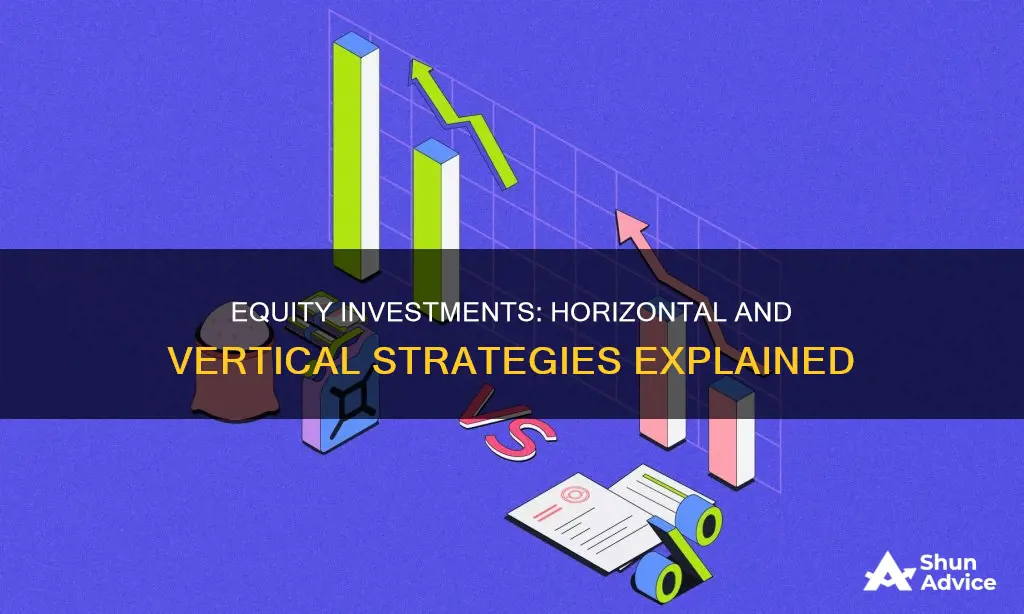
The concepts of horizontal and vertical equity are used in the context of social policy, particularly taxation, to ensure fairness and social justice. Horizontal equity refers to the idea that people in the same circumstances should be treated the same way, with the same level of income tax imposed on those in the same income group. This principle of equal treatment for equals aims to prevent discrimination based on race, gender, or type of work. On the other hand, vertical equity focuses on redistributing income within society by ensuring that people with higher incomes pay more tax through progressive or proportional taxation. This principle of ability to pay aims to establish a fairer taxation system where individuals with higher incomes contribute a larger portion of their income in taxes. While horizontal equity serves as an important starting point for any tax system, vertical equity ensures that those with more economic resources take on a greater share of the responsibility for funding public services.
| Characteristics | Values |
|---|---|
| Horizontal Equity | Individuals with similar income and assets should pay the same amount in taxes |
| Vertical Equity | A method of collecting income tax in which the taxes paid increase with the amount of income earned |
| Horizontal Equity in Healthcare | Equity between people with the same healthcare needs |
| Horizontal Equity in Taxation | A tax system that does not give preferential treatment to certain individuals and companies |
| Vertical Equity in Taxation | Proportional or progressive taxes |
| Horizontal Equity and Discrimination | No discrimination on the grounds of race, gender, or different types of work |
| Vertical Equity and Income Redistribution | People with higher incomes should pay more tax |
What You'll Learn
- Horizontal equity is based on the idea that people with the same income should be taxed at the same rate
- Vertical equity is concerned with redistributing income within society
- Horizontal equity aims to produce a neutral tax system
- Vertical equity is also known as progressive taxation
- Horizontal equity is harder to achieve due to tax breaks and loopholes

Horizontal equity is based on the idea that people with the same income should be taxed at the same rate
The concept of horizontal equity is based on the principle of fairness and equal treatment for individuals with the same income or wealth. It asserts that people with similar financial circumstances should be taxed at the same rate, creating a neutral and non-discriminatory tax system. Horizontal equity implies that if two individuals earn the same income, they should be taxed identically, without considering factors like race, gender, or occupation. This approach aims to prevent preferential treatment for certain individuals or companies and ensures that people with equal means contribute equally.
Horizontal equity is challenging to implement in tax systems with deductions, credits, and incentives. For instance, in the US, the ability to deduct mortgage interest from taxable income creates a disparity in tax payments between two individuals with the same income. This example illustrates how tax breaks can disrupt the principle of horizontal equity.
Horizontal equity is often viewed as a precursor to vertical equity, which focuses on redistributing income within society. Vertical equity asserts that higher-income earners should pay a larger proportion of their income in taxes, typically through progressive or proportional taxation systems. While vertical equity aims to ensure that those with higher incomes contribute more to public services, it is compatible with horizontal equity as it still treats people in similar circumstances equally.
Horizontal equity serves as a foundation for tax systems in many countries, including the USA. It is a crucial concept in ensuring fairness and equity in taxation policies, though it must be balanced with considerations of ability to pay and societal benefit, as reflected in the concept of vertical equity.
Strategizing Your Investment Portfolio: A Comprehensive Guide
You may want to see also

Vertical equity is concerned with redistributing income within society
The idea behind vertical equity is that those with the means to pay more should contribute more. For example, if an individual earning $100,000 is taxed at a 20% rate, while someone earning $50,000 is taxed at 10%, the system is considered vertically equitable. Proponents of this system argue that wealthier individuals benefit more from government services and should, therefore, pay a larger share. For instance, since tax dollars fund police services, and wealthy people have more assets to lose in a robbery, they should pay higher taxes.
Vertical equity is compatible with horizontal equity, which states that individuals with similar incomes should be taxed at the same rate. While horizontal equity can be a good starting point for any tax system, it can be challenging to maintain due to tax deductions, credits, and loopholes. Vertical equity, on the other hand, is generally easier to implement, especially on income-based taxes.
However, vertical equity is not without its challenges. In some cases, tax deductions and credits can result in lower-income individuals paying a higher proportion of their income in taxes than wealthier individuals. Additionally, high tax rates on higher incomes may discourage individuals from seeking higher-paying jobs or pursuing economic growth.
Overall, vertical equity plays a crucial role in redistributing income within society, aiming to ensure that those with higher incomes contribute more to the funding of public services, while also promoting fairness and social justice.
Wealth Management: Investment Management's Strategic Arm?
You may want to see also

Horizontal equity aims to produce a neutral tax system
Horizontal equity is an economic theory that aims to create a neutral tax system by treating people in identical situations the same. It is based on the idea that individuals with the same income and assets should pay the same amount in taxes, regardless of other factors such as race, gender, or occupation. This concept is important for ensuring fairness and preventing discrimination in taxation policies.
Horizontal equity proposes a tax system that does not give preferential treatment to certain individuals or companies. It is related to the concept of tax neutrality, aiming to protect taxpayers against arbitrary discrimination. For example, if two people earn the same income of $50,000, they should both be taxed at the same rate and have the same tax bill, let's say of $10,000. In this case, the system is considered horizontally equitable.
However, achieving horizontal equity can be challenging due to the presence of tax breaks, loopholes, deductions, credits, and incentives in tax systems. For instance, in the US, the ability to deduct mortgage interest from income creates a situation where two individuals with the same income may end up paying different amounts in taxes. This undermines the principle of horizontal equity, as it no longer treats similar individuals equally.
Despite the challenges, horizontal equity is considered a fair and neutral system of taxation by many economists. It serves as an important starting point for tax systems, providing a foundation for distributing tax burdens in a just and equitable manner.
Horizontal equity is distinct from vertical equity, which focuses on redistributing income within society. Vertical equity proposes that people with higher incomes should pay a greater share of taxes, often through progressive or proportional taxation. While vertical equity aims to ensure that those with a higher ability to pay contribute more, horizontal equity seeks to establish a level playing field for individuals with similar incomes, regardless of their overall position in society.
Understanding Portfolio Investment Entities: Definition and Overview
You may want to see also

Vertical equity is also known as progressive taxation
Vertical equity is a method of collecting income tax that adheres to the principle that those with the ability to pay more taxes should contribute more than those who cannot. It is also known as progressive taxation, as the tax levels increase in tandem with income.
The vertical equity system is based on the principle that individuals with higher incomes and more assets must pay higher income taxes than others. This is in contrast to the horizontal equity system, where all citizens are taxed the same amount, based on the idea that all citizens are equal and should therefore be subject to the same tax liability.
Vertical equity aims to ensure that those who earn more, pay more. It is compatible with horizontal equity, as people in the same situation can be treated the same way. It is much easier to implement vertical equity on income-based taxes than on asset-based taxes, as income is liquid, while assets are not.
There are three types of vertical equity: proportional, regressive, and progressive. Proportional taxation means that all individuals pay the same percentage of their income as tax. As an individual's wealth increases, so does the absolute amount of their tax liability, and vice versa. Progressive taxation means that as wealth increases, the percentage of income paid as tax also increases. Regressive taxation, where lower earners pay a higher tax rate, no longer exists in modern capitalist societies.
The US employs a progressive tax system, where earners fall into tax brackets based on their income. Those in higher income tax brackets pay a greater percentage of their earnings in taxes, while those who earn less, pay a smaller percentage.
Passive Equity Investments: Leveraging Opportunities for Long-Term Growth
You may want to see also

Horizontal equity is harder to achieve due to tax breaks and loopholes
Horizontal equity is a economic theory that proposes that individuals with similar incomes and assets should pay the same amount in taxes. It is based on the idea of fairness and equal treatment, ensuring that people in the same situation are treated the same way. However, achieving horizontal equity can be challenging due to the presence of tax breaks, loopholes, and deductions in tax systems, particularly in countries like the United States.
Tax breaks, loopholes, and deductions allow certain individuals or companies to pay less tax than others with similar incomes. For example, in the US, mortgage interest payments can be deducted from taxable income, resulting in lower tax payments for homeowners compared to renters with similar incomes. Similar loopholes exist for companies, such as the ability to reduce their tax bills by inflating foreign sales. These loopholes create a situation where horizontal equity, which aims for equal treatment, is difficult to achieve.
Additionally, tax systems may offer tax-deductible expenses for medical or education expenses, which can be justified as helping individuals in challenging circumstances but also create tax inequality. Other deductions, such as property taxes and pension contributions, can also advantage higher-income earners over lower-income ones.
The presence of these tax breaks and loopholes makes it challenging to maintain horizontal equity, as they result in similar individuals paying different amounts of tax. While horizontal equity aims for fairness and equal treatment, the complexity of tax systems and the existence of these deductions and incentives make it harder to achieve.
USDT Investment Guide for Indians: Getting Started
You may want to see also
Frequently asked questions
Equity is the value of what you own. In the context of investments, it is the value of your investments, less any money you have borrowed against them.
Horizontal equity is the economic theory that individuals with similar incomes and assets should pay the same amount in taxes. It is based on the idea that people in the same income group should be taxed at the same rate.
Vertical equity is a method of collecting income tax where the tax rate increases with the amount of earned income. The principle behind vertical equity is that those who have the ability to pay more taxes should contribute more.
Horizontal equity in healthcare refers to equity between people with the same healthcare needs. It proposes that equal healthcare be provided for those who are similar in a relevant respect, such as having the same healthcare need.
Equity can be leveraged to help companies grow faster and become more productive, innovative, and competitive. By providing long-term risk capital, managerial support, and introducing best practices, equity investing can play a crucial role in a company's growth and development.







